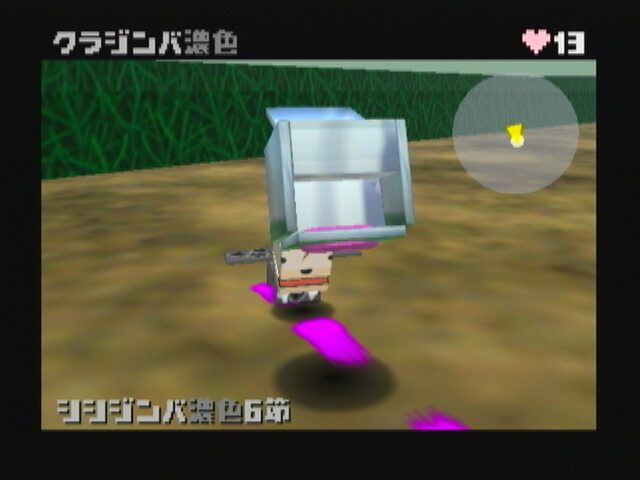Retro Replay Review
Gameplay
Cubivore: Survival of the Fittest delivers a gameplay experience unlike any other, blending action, evolution, and strategy into one cohesive package. Players begin as a diminutive cubivore with limited abilities, forced to scavenge for prey and contend with rival predators. Every successful hunt not only replenishes your health but also grants “meat points,” the currency you need to evolve into more powerful cubivore forms. This meat-based progression system creates a constant push‐and‐pull between risk and reward as you venture deeper into dangerous territories.
Central to the gameplay is the transformation mechanic: by combining your meat points with specific cubivore mutations, you unlock new body shapes, abilities, and elemental affinities. These transformations aren’t merely cosmetic—each form carries unique strengths and weaknesses, from speed boosts and defensive armor to elemental breath attacks. Experimenting with different combinations becomes essential, as certain predator types are more vulnerable to fire or ice, and some environments favor nimble, lightweight forms over hulking brutes.
Combat itself is deceptively simple but richly layered. Engaging an opponent involves a timing‐based lock‐on system, directional dodges, and context‐sensitive attacks that vary by form. Battles against territorial alpha cubivores or towering boss creatures force you to master each form’s move set and learn attack telegraphs. The balance of hunger management and combat readiness adds tension to every encounter: linger too long without food, and your cubivore will weaken; rush into fights unprepared, and you risk losing all your hard‐earned progress.
Graphics
One of the most striking features of Cubivore is its wholly cubist visual design—a stunning homage to geometric abstraction. Nearly everything you see, from sprawling forests to the sky itself, is composed of cubes, rectangles, and squares. Leaves fall in pixelated clumps, water ripples in stepped waves, and even the sun and moon drift across the sky as giant floating cubes. This minimalist aesthetic creates a surreal atmosphere that feels both retro and avant‐garde.
Despite its low‐polygon style, the game’s environments are exceptionally vibrant. Dynamic lighting casts crisp shadows off blocky overhangs, and particle effects—like square‐shaped blood pools or cuboid dust clouds—add flair to every skirmish. The world feels alive and reactive: stepping into shallow water triggers a square ripple that expands outward, while foliage parts in distinct cubic chunks as you charge through underbrush.
Performance on the original GameCube hardware is admirably smooth, with minimal slowdown even during large‐scale battles. The stark color palette—earthy greens, fiery reds, and metallic grays—helps important gameplay elements stand out, ensuring you can track fast‐moving predators and flashing evolution prompts without visual clutter. Overall, the graphics may appear simple at first glance, but their consistency and creativity make Cubivore visually unforgettable.
Story
At its core, Cubivore tells a metaphorical tale of wilderness reclaimed. The world has been laid to waste by a vicious “Killer Cubivore” that hunts indiscriminately, erasing diversity and reducing the land to barren wasteland. Players step into the role of a nascent cubivore striving to overthrow this tyrant and restore balance to the ecosystem. While the narrative is delivered with minimal dialogue, Gento Matsumoto’s vision shines through environmental storytelling and evolving terrain.
Each newly conquered region reveals clues to the land’s former glory: twisted, cube‐shaped trees sprout green foliage when you defeat the local alpha, and pools of blood transform back into pristine water blocks as the wild heals. You’re not just fighting for personal power but for the resurgence of the natural order. This allegory of civilization reverting—or progressing—back to wilderness feels surprisingly poignant, especially given the game’s stark, artful presentation.
Though there is no conventional cutscene‐laden plot or voiced characters, the cyclical cycle of conquest, adaptation, and restoration drives a compelling narrative loop. The absence of lengthy exposition encourages exploration and self‐directed discovery, making each victory feel earned. By the time you confront the final Killer Cubivore in its dark, cuboid lair, you’ll be fully invested in both your personal evolution and the fate of the land you’ve nurtured back to life.
Overall Experience
Cubivore: Survival of the Fittest is a truly unique title that defies genre conventions. Its blend of action combat, mutation mechanics, and environmental allegory creates an experience that is simultaneously challenging and thought‐provoking. The gameplay loop of hunting to evolve, evolving to hunt stronger prey, and then using your newfound power to heal the land is addictive, encouraging multiple playthroughs to discover every form and hidden area.
While the learning curve can be steep—especially when it comes to mastering transformations and targeting specific prey weaknesses—the sense of discovery is immensely rewarding. The game’s cubic aesthetic might feel jarring at first, but its consistency and charm quickly win you over. The sound design complements the visuals perfectly, with atmospheric ambient tracks and sharp combat SFX that punctuate every bite, roar, and blocky explosion.
Cubivore won’t appeal to everyone; its minimal narrative and abstract visuals are best suited for players seeking an unconventional, art‐driven adventure. However, for those open to experimentation, it offers a rich tapestry of emergent gameplay moments. Whether you’re a fan of creature‐collection mechanics, evolutionary simulators, or simply games that dare to be different, Cubivore: Survival of the Fittest stands out as a bold and memorable journey through a world of cubes.
In the end, Cubivore’s greatest strength lies in its ability to transform a simple concept—nature reclaimed—into an engaging, interactive odyssey. It challenges you to adapt, to strategize, and ultimately to become the apex cubivore, restoring life block by block. For anyone intrigued by imaginative gameplay and singular art styles, Cubivore is well worth the expedition into its cubed wilderness.
 Retro Replay Retro Replay gaming reviews, news, emulation, geek stuff and more!
Retro Replay Retro Replay gaming reviews, news, emulation, geek stuff and more!









Reviews
There are no reviews yet.